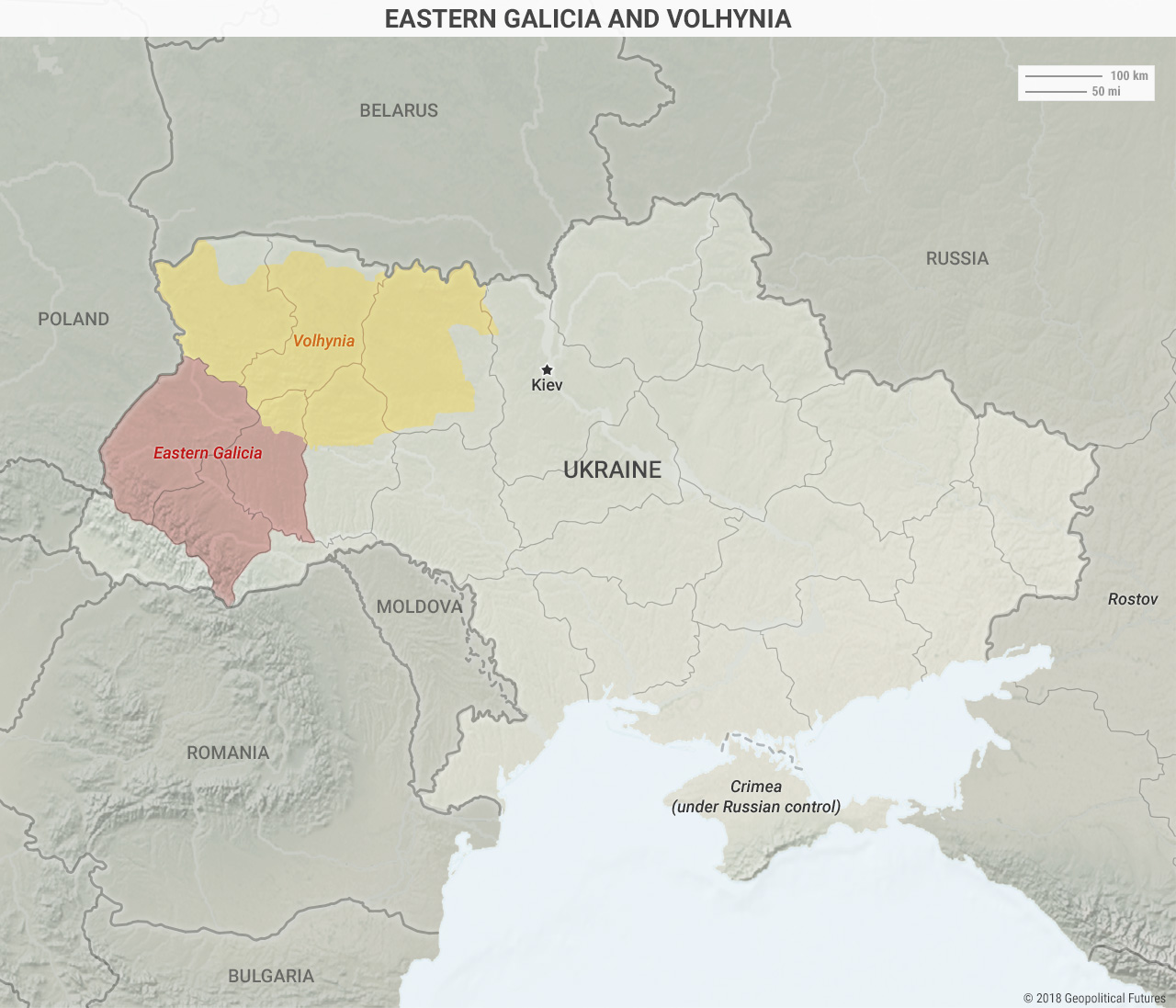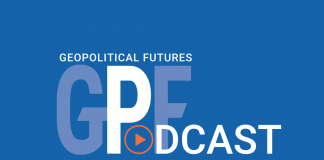In 2014, Ukraine’s Russian-backed president, Viktor Yanukovych, was ousted from power after refusing to sign an association agreement with the EU. Since then, two parts of Ukraine’s history have been brought to the forefront in Ukrainian politics, and both have been used as symbols of Ukrainian resistance and its fight for independence. The first is the Holodomor, a famine imposed by the Soviet regime in the early 1930s that killed millions of Ukrainians and was intended to eliminate Ukraine’s independence movement. The second is the paramilitary Ukrainian Insurgent Army, or UPA, and Stepan Bandera, the leader of the Organization of Ukrainian Nationalists. Both groups were involved in the massacre of Poles in Volhynia and Eastern Galicia, two regions that were at the time split between Poland and western Ukraine, during the Nazi occupation of Poland.
Following the end of World War II, much of Volhynia and Eastern Galicia became part of the Ukrainian Soviet Socialist Republic, and Poland became a Soviet satellite state. Since both entities were essentially administered, to different degrees, by Moscow, there was a desire to downplay the differences between Poles and Ukrainians and censor any discussion of the killing of Poles at Volhynia and Eastern Galicia and other similar events. Only since Ukrainians began celebrating Bandera as a national hero did these atrocities become the center of a heated dispute between the two countries.
In Poland, the events became the focus of books, movies and political debates, and in 2016, the Polish parliament unanimously approved a law that declared the massacre at Volhynia a genocide. In February, Warsaw went a step further and passed a law making it a crime to deny that the UPA committed crimes against Poles between 1925 and 1950. The Ukrainian parliament then passed a resolution condemning the law.
The revival of these historical events should be seen in the broader context of rising nationalism in both countries. The biggest nationalist protests were held last fall, when tens of thousands demonstrated in Kiev and Warsaw. In Kiev, demonstrators marked the 75th anniversary of the UPA by chanting the group’s slogans. In Warsaw, some protesters marked the country’s independence day by holding banners depicting a falanga, a far-right symbol from the 1930s, and shouting slogans referencing the country’s Catholic roots. The march was organized by the All-Polish Youth and the National Radical Camp, a revival of a nationalist 1930s group.
The protests have been accompanied by a diplomatic tit for tat. In April 2017, Kiev banned the exhumation of Poles killed during World War II, and later that year, Warsaw refused to allow the head of Ukraine’s commemoration commission into Poland in response. In December, the Polish president threatened to delay a visit to Kiev due to what the president’s chief aide called an increasingly “negative evolution of Ukraine’s policy in history and national identity with regard to Poland, as well as its deteriorating relations with neighbors from Central Europe.”
Ultimately, the current tensions won’t change the fact that Poland needs Ukraine as an ally. In fact, cooperation between the two on military matters increased in 2017, and their economic ties, including trade and investment, have remained consistent. The tensions are indicators of the domestic pressures facing the two governments rather than changes in policy or strategy. Both governments ran on nationalist platforms, and when developments in another country sparked nationalist protests and upheaval among their electorates, they needed to respond. We can therefore expect Ukrainian politicians to continue to invoke the UPA and Stepan Bandera as symbols of national pride and Polish politicians to express their outrage. But not much more will result.






 Special Collection – The Middle East
Special Collection – The Middle East